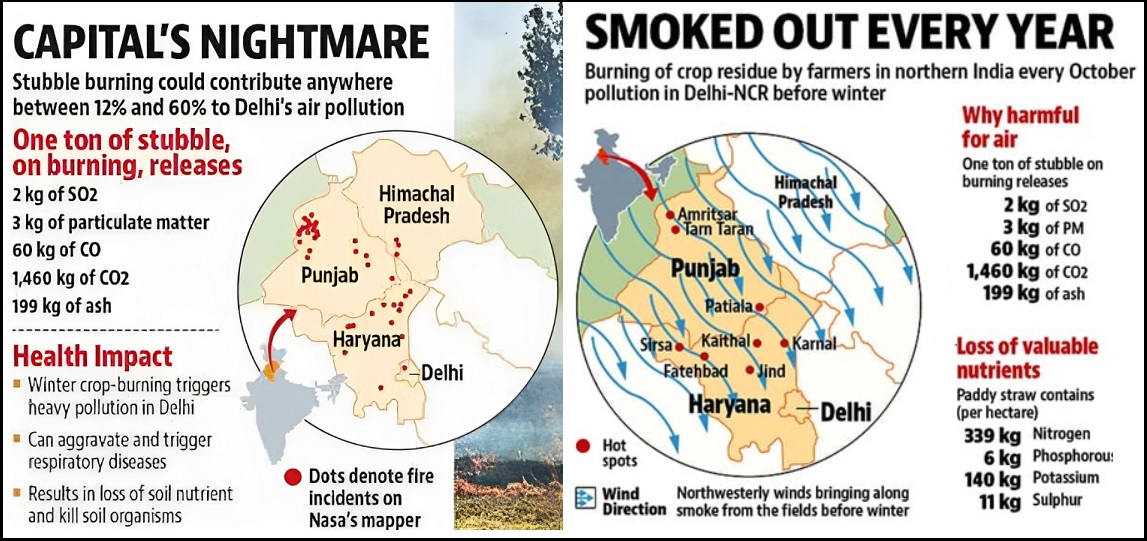7667766266
enquiry@shankarias.in
Recently, Supreme Court asked the Punjab government why it could not fund the costs of crop residue management machines for marginal farmers.
|
Stubble burning |
High prevalence |
|
Rice |
Punjab and Haryana |
|
Wheat |
Uttar Pradesh |


|
Supreme Court’s Remarks on Stubble Burning |
|
Chhattisgarh model
References